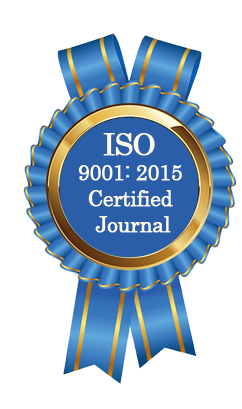| All | Since 2020 | |
| Citation | 105 | 60 |
| h-index | 4 | 4 |
| i10-index | 3 | 2 |
WJAHR Citation 
Login
News & Updation
Best Article Awards
World Journal of Advance Healthcare Research (WJAHR) is giving Best Article Award in every Issue for Best Article and Issue Certificate of Appreciation to the Authors to promote research activity of scholar.
Best Article of current issue
Download Article : Click here
Indexing
Abstract
THE EFFECT OF HEIGHT AND WEIGHT ADJUSTED DOSE OF INTRATHECAL HYPERBARIC BUPIVACAINE FOR ELECTIVE CAESAREAN SECTION
Dr. Shawqi Abdul Sada Azeez*, Dr. Ali Saadoon Hashim, Dr. Ahmed Hussien Abd Janabi and Dr. Marwan Almashhadani
ABSTRACT
Background: The commonly observed hypotension during spinal block, if uncorrected, causes adverse effects on the mother and the neonate. The means to reliably prevent maternal hypotension under spinal anesthesia continues to elude the practicing anesthesiologist. Thus, one of the important methods to reduce hemodynamic changes would be to limit wide spread sympathetic block during spinal anesthesia. This can be achieved by restricting the spinal segment block desired for a caesarean section. While some studies have identified the patient's height and the sensory block level as risk factors for the hypotensive episodes in the mother during caesarean section others have been inconclusive. Nevertheless, the use of a dose of hyperbaric bupivacaine adjusted to patient's weight and height has shown to limit the spinal segment block spread. The dose adjustment study has been based on a Caucasian population and Nepalese women. No such study has been based on Iraqi women, where height is generally shorter than that of Caucasian women. Aim of the study: The study compared spinal anesthesia using intrathecal hyperbaric bupivacaine between height and weight adjusted dose and fixed dose during caesarean section. Methods: eighty parturient, who were scheduled for elective caesarean section under spinal anesthesia, were randomly assigned into two groups. We adjusted the intrathecal dose of heavy bupivacaine (0.5 %) according to the height and weight of patients (Group AD) from Harten’s dose chart developed from the Caucasian parturient and the fixed dose (2.5 ml) was used in Group FD patients. Keeping the observer blinded to the study groups, the sensory block up to T10, were observed. Results: we found that statistical differences in visual analogue scores, shivering, Ephedrine use, nausea and vomiting were significant in all readings. While, differences in Diastolic blood pressure were significant at 3min., 6 min., 9 min., 12 min., and 15 min. readings, and were insignificant at 25 min., 35 min., and 45 min. readings. No significant statistical differences in systolic blood pressure were found in all reading. Conclusions: the heavy bupivacaine dose adjusted on the basis of the chart of Harten significantly decreased the bupivacaine dose requirement compared with the usual dose use, with lesser incidence of hypotension, nausea and vomiting, and shivering during cesarean delivery
[Full Text Article] [Download Certificate]
